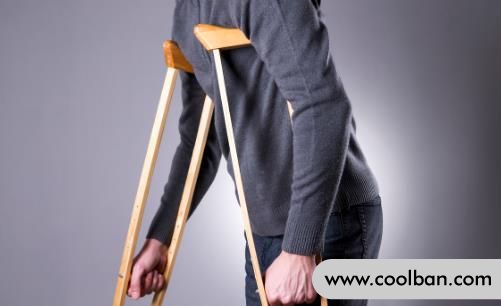How to fix a broken bone first aid?
Fracture fixation plays an important role in first aid. Timely and correct fixation has an excellent effect on preventing shock, preventing wound infection, and preventing further damage to blood vessels, bones, nerves, and soft tissues.

First aid fixation equipment When out-of-hospital emergency fracture fixation, materials are often obtained locally, such as various 2-3 Centimeter-thick branches, sticks, boards, bamboo poles, bamboo chips, cardboard, and healthy (lower) limbs of the injured can be used as immobilization substitutes.
Fracture fixation methods in different parts
1. Cervical vertebra fracture fixation should keep the injured person's head, neck and trunk in a straight position; place the wooden board under the head to the buttocks, and use cotton cloth, clothing, etc. to pad the injured person's neck and both sides of the head to prevent left and right swinging; then use a bandage Or the forehead, shoulders, upper chest, and buttocks are fixed on the plank with cloth belts to make them stable.
2. Fix the clavicle fracture with a bandage on the shoulder and back to make a figure-8 fixation, and use a triangle scarf or a wide cloth strip to tie the neck to the forearm.
3. Fixation of humerus fractures Use 2-3 substitute splints to fix the affected limb, and use a triangle towel and cloth to suspend it on the neck.
4. For the fixation of forearm fractures, two wooden boards, the length of which should exceed the elbow joint, should be placed on the palm and back of the forearm respectively, and then tied up with a cloth belt or a triangle towel.
5. Use two planks for femoral fracture fixation, and fix the thigh and calf together. It is placed on the front and back of the thigh and up to the waist, and the ankle joint is fixed together to prevent the fracture and dislocation caused by the movement of these two parts.
6. For calf or fibula fractures, the affected limb can be fixed on the healthy limb without fixation material.

Five major strategies for fracture fixation:
1. In case of respiratory or cardiac arrest, cardiopulmonary resuscitation should be performed first; for hemorrhagic shock, the bleeding should be stopped first, and then fixation should be performed after the condition has fundamentally improved.
2. During out-of-hospital fixation, it is forbidden to restore the deformity caused by the fracture, and the broken end of the fracture cannot be returned to the wound, as long as it is properly fixed.
3. The splint of the substitute is longer than the joints at both ends and fixed together. The splint should be smooth, the side of the splint should be close to the skin, and it is best to use a soft pad to cover and wrap both ends.
4. It should not be too loose or too tight when fixing.
5. When immobilizing the limbs, the fingers (toes) should be exposed as much as possible to observe whether the tips of the fingers (toes) are swollen, purple, pain, and blood circulation disorders.

What is the best food not to eat for fractures?
Do not blindly supplement calcium. For patients who are bedridden after a fracture, blindly supplementing calcium is not beneficial and may be harmful.
Don't eat too much meat and bones. Modern medicine has proven through many practices that if fracture patients eat more meat and bones, not only can they not heal early, but they will delay the healing time of fractures.
Don't be partial
Do not eat foods that are prone to flatulence or indigestion, such as potato and glutinous rice.
Don't drink less water, especially for patients with fractures of the spine, pelvis and lower extremities, who are very inconvenient to move, so try to drink less water to reduce the frequency of urination, but more troubles have also occurred. Such as bedridden patients less activity, weakened peristalsis, coupled with reduced drinking water, it is easy to cause constipation. Long-term bed rest and urinary retention can easily induce urinary tract stones and urinary tract infections. Therefore, bedridden fracture patients should not drink less water.
Do not eat too much white sugar. After a large amount of white sugar intake, it will cause a rapid metabolism of glucose, so that the body is in a state of acid poisoning. At this time, the alkaline calcium ions will be immediately mobilized to participate in the neutralization to prevent the blood from becoming acidic. A large amount of calcium consumption will be detrimental to the rehabilitation of fracture patients. At the same time, too much white sugar will reduce the content of vitamin B1 in the body, and insufficient vitamin B1 will greatly reduce the activity of nerves and muscles, and also affect the recovery of function. Therefore, fracture patients should not eat too much sugar.
